Emission Systems - 1971 (continued)
CEC SOLENOID
The CEC solenoid (Fig 71.7) controls the deceleration rate and routing of vacuum in the distributor. The CEC solenoid maintains a preset RPM during deceleration until the transmission is down-shifted. When down-shifted the circuit is broken to the CEC solenoid, allowing the plunger to de-energize, thus blocking vacuum to the distributor during idle and low gear operation.
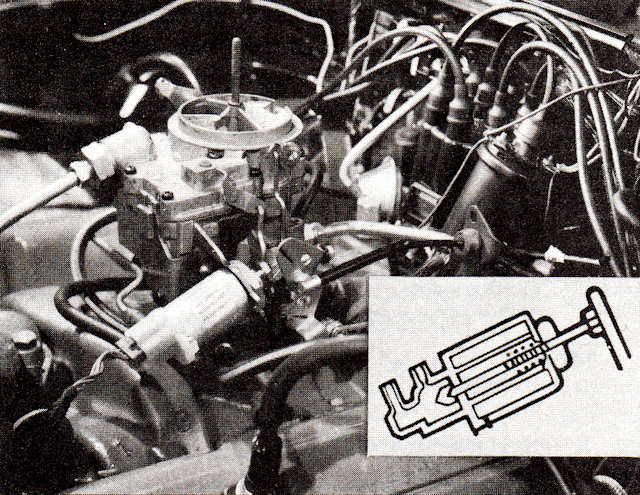
Fig 71.7 - Vacuum Advance (CEC) Solenoid
COLD OVERRIDE TEMPERATURE SWITCH
The cold override temperature switch (Fig 71-8) is a three way switch. The points can be closed to provide code override, hot light activation, or neutral position. At engine temperatures below 82° F, the bimetal post contacts the "cold" terminal, closing the circuit to the CEC solenoid. At approximately 82° F,, the contact is broken, and the post will remain in the neutral position during normal operating conditions. When the coolant operating temperature exceeds 257" F, the post contacts the "hot" terminal to activate the dash-mounted "hot light."
On some Chevrolets (Corvette and Camaro as previously outlined) two separate temperature switches are used. One switch provides both "Cold" override (below 82° F) and "Hot" override (257" F) which allows vacuum to the distributor. The other switch is calibrated to activate the dash-mounted "hot light" when the coolant temperature exceeds 257" F).
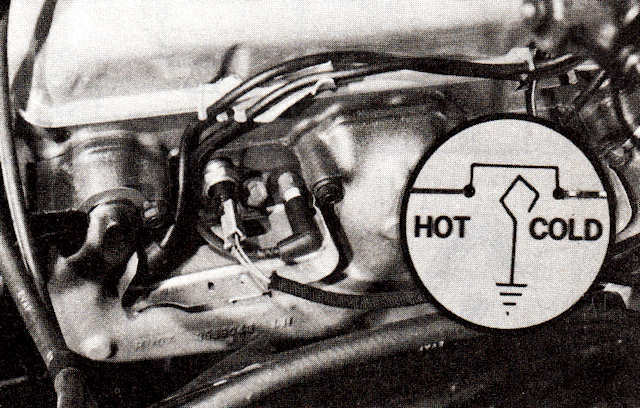
Fig 71.8 - Temperature Override Switch
TIME-DELAY RELAY
The time-delay relay (Fig 71.9) is a normally closed bimetallic switch. It is grounded through its housing and complete a circuit from the battery through the ignition switch or from the battery through the ignition switch and CEC solenoid, depending upon engine temperature and transmission gear position.
The bimetallic coil opens approximately 20 seconds after the ignition key is turned on, providing the engine temperature is above 82° F, or for approximately 20 seconds after the engine temperature switch "cold" override points open. Vacuum to the distributor for this time internal improves drive-away and eliminates stall after start tendencies.
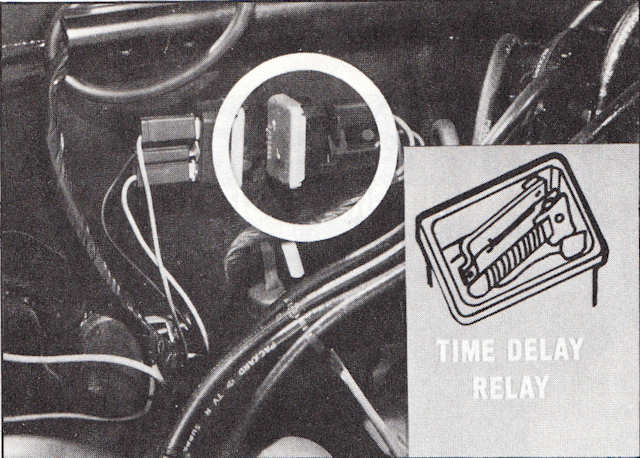
Fig 71.9 - Time-Delay Relay
REVERSING RELAY
The reversing relay (Fig 71.10) is a magnetically controlled two position switch. In its normally closed position the lever makes contact with the ground terminal and completes a circuit through the CEC solenoid. Contact is broken when the transmission-mounted switch points are close which completes a circuit from the battery through the ignition switch. This circuit sets up a magnetic field in the relays which pulls the points open and breaks the circuit to the CEC solenoid, de-energizing it a blocking vacuum to the distributor advance unit. When the transmission is in high gear, the transmission switch points open, breaking the circuit from the battery through the ignition switch and reversing relay. The reversing relay points close, providing a circuit through the grounded relay to the CEC solenoid, energizing the solenoid and providing vacuum to the distributor advance unit.
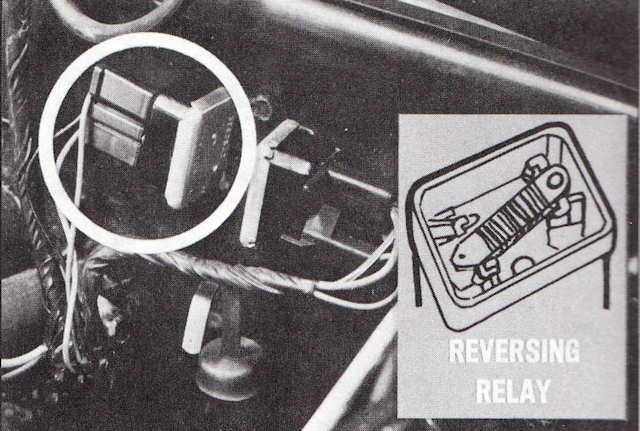
Fig 71.10 - Reversing Relay
TRANSMISSION SWITCH
The transmission mounted spark control switch (Fig 71.11) is a two-way switch actuated by the shifter shaft on manual transmissions, and by oil pressure on automatic transmissions. In low gear(s) the points are closed. In high gear the points open, breaking the circuit to the reversing relay and permitting vacuum to the distributor advance unit.
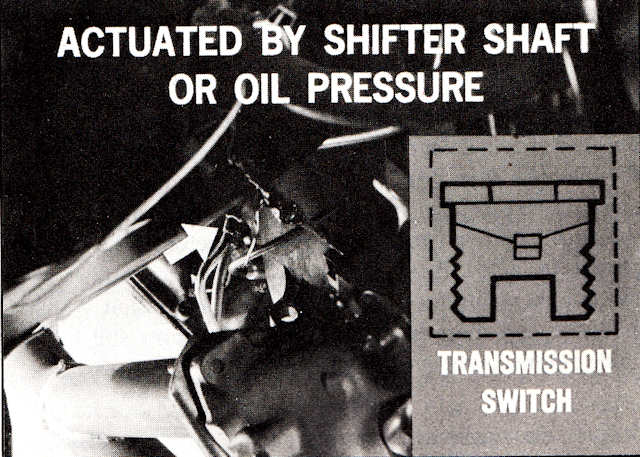
Fig 71.11) - Transmission Mounted Spark Control Switch
TROUBLESHOOTING
To troubleshoot the complaints of poor high-gear performance, stumble and stall in hot or cols start, excessive fuel consumption, or exhaust pop during deceleration, test for a possible inoperative CEC solenoid. Before proceeding to the tests, check the CEC system fuse and wiring connections. The fuse is labeled TCS on the cowl under the left side of the instrument panel. If the fuse is inoperative, check the wiring for shorts or opens, the replace fuse before you perform any tests.
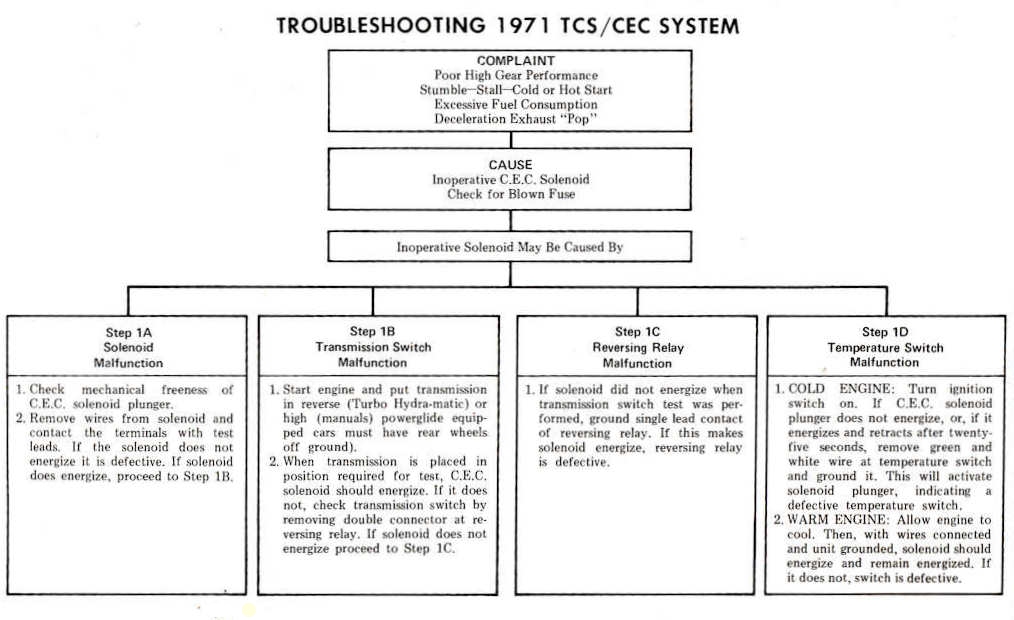

TEST PROCEDURES →
![]() Mention you saw it on © ChevelleWorld and please give the site credit for the
information.
Mention you saw it on © ChevelleWorld and please give the site credit for the
information.
![]() Be sure to visit my ChevelleCD site for
Chevelle CDs, challenge coins, and other gifts for that Chevelle fan in your
family and my
Stickers & Calendars website for custom stickers and calendars with your
favorite car/pet/occasion.
Be sure to visit my ChevelleCD site for
Chevelle CDs, challenge coins, and other gifts for that Chevelle fan in your
family and my
Stickers & Calendars website for custom stickers and calendars with your
favorite car/pet/occasion.
Say you saw it here on © ChevelleWorld
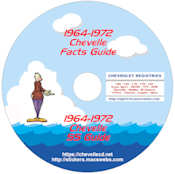
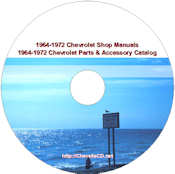


Want more in-depth information on 1964-1972 Chevelles? My Facts and SS Guide
program CD, my Shop Manuals & Parts Catalog program DVD, and my 1964-1972
Trim Tag, Warranty Card program CD and my Chevy Numbers program
CD. Check them and other informative
program CDs at my https://chevellecd.net
website.
© ChevelleWorld

 1964 Chevelle
1964 Chevelle 1965 Chevelle
1965 Chevelle 1966 Chevelle
1966 Chevelle 1967 Chevelle
1967 Chevelle 1968 Chevelle
1968 Chevelle 1969 Chevelle
1969 Chevelle 1970 Chevelle
1970 Chevelle 1971 Chevelle
1971 Chevelle 1972 Chevelle
1972 Chevelle


